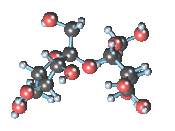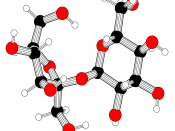Osmosis is the diffusion of water molecules from an area of high concentration of sucrose solution to an area of lower concentration of sucrose solution, through a selectively permeable membrane. The water molecules move down a concentration gradient in osmosis. Two diagrams of osmosis are shown in figures 1 and 2. Figure 1 shows the diffusion of water molecules through a selectively permeable membrane from an area of highly concentrated sucrose solution to an area of lower concentrated sucrose solution. Figure 2 shows a concentration gradient, in which the water molecules are diffusing down the concentration gradient.
Depending on whether the higher concentration of sucrose molecules is on the outside of the selectively permeable membrane or on the inside of the selectively permeable membrane, the cell will either become turgid or plasmolysed. If the water molecules are diffusing into the cell through the selectively permeable membrane the cell will become turgid.
If the water molecules are diffusing out of the cell through the selectively permeable membrane the cell will become plasmolysed.
1. A Turgid Cell
When osmosis takes place the water molecules will diffuse into the vacuole of the cell to an area of lower concentration. Due to the added water inside the cell it will swell and become turgid. When a cell is turgid the vacuole is large, as is the volume of cytoplasm. The cell membrane is pushed towards to cell wall and therefore the cell wall will bulge outwards. A diagram of such a cell can be seen in figure 3.
2. A Plasmolysed Cell
This happens when the water molecules diffuse out of the cell to an area of lower concentration of water molecules. As the cell is losing water it will shrink and become plasmolysed. When a cell is plasmolysed there is a...



I like what I see
Very good essay overall, it has very good stuff
1 out of 1 people found this comment useful.